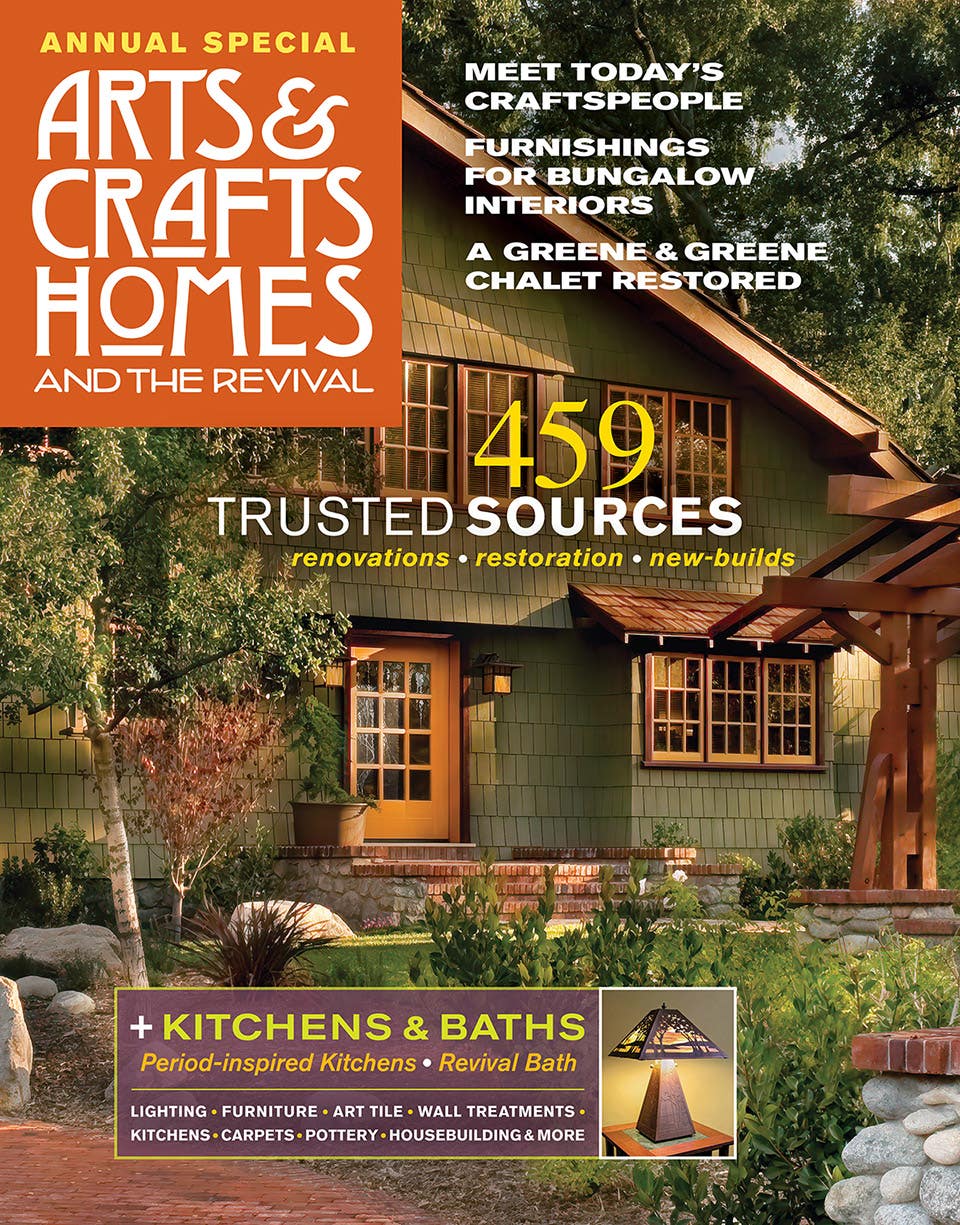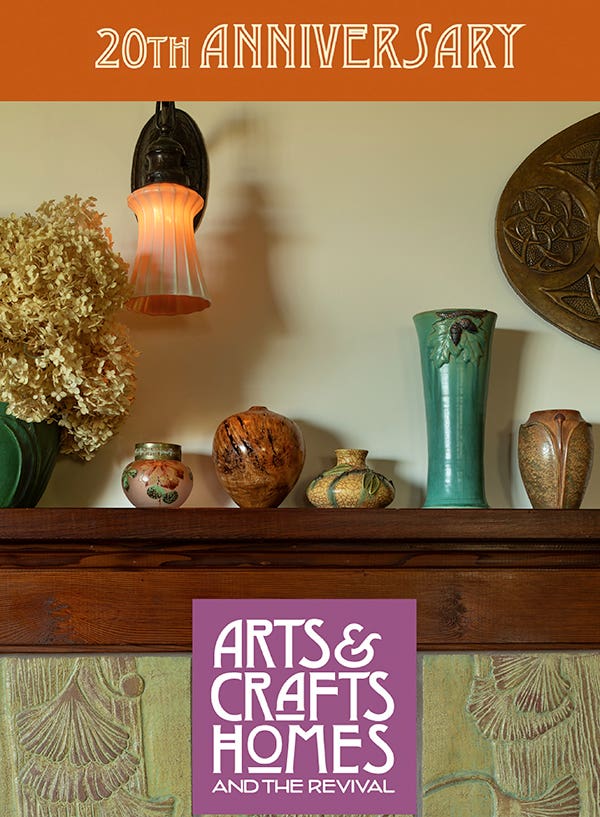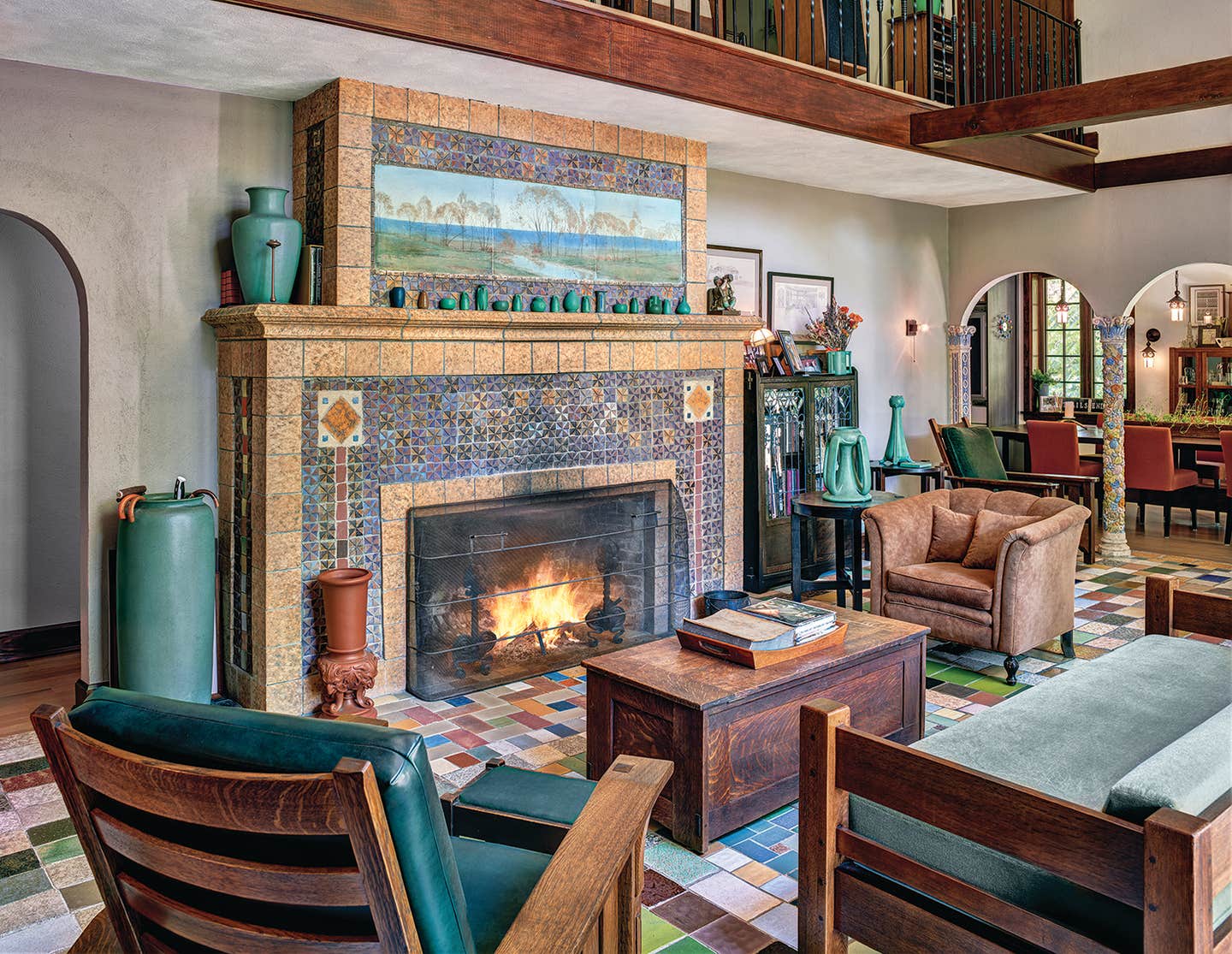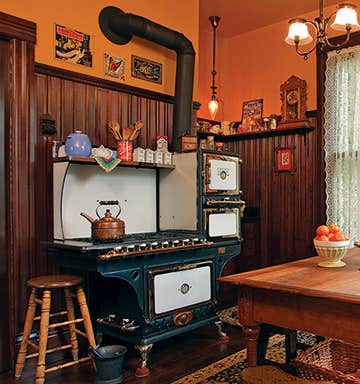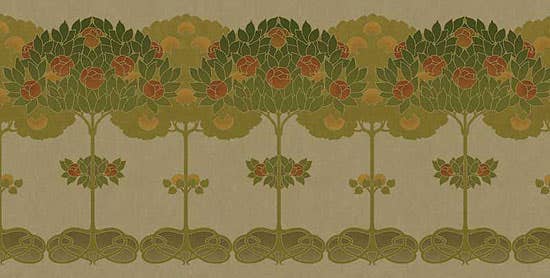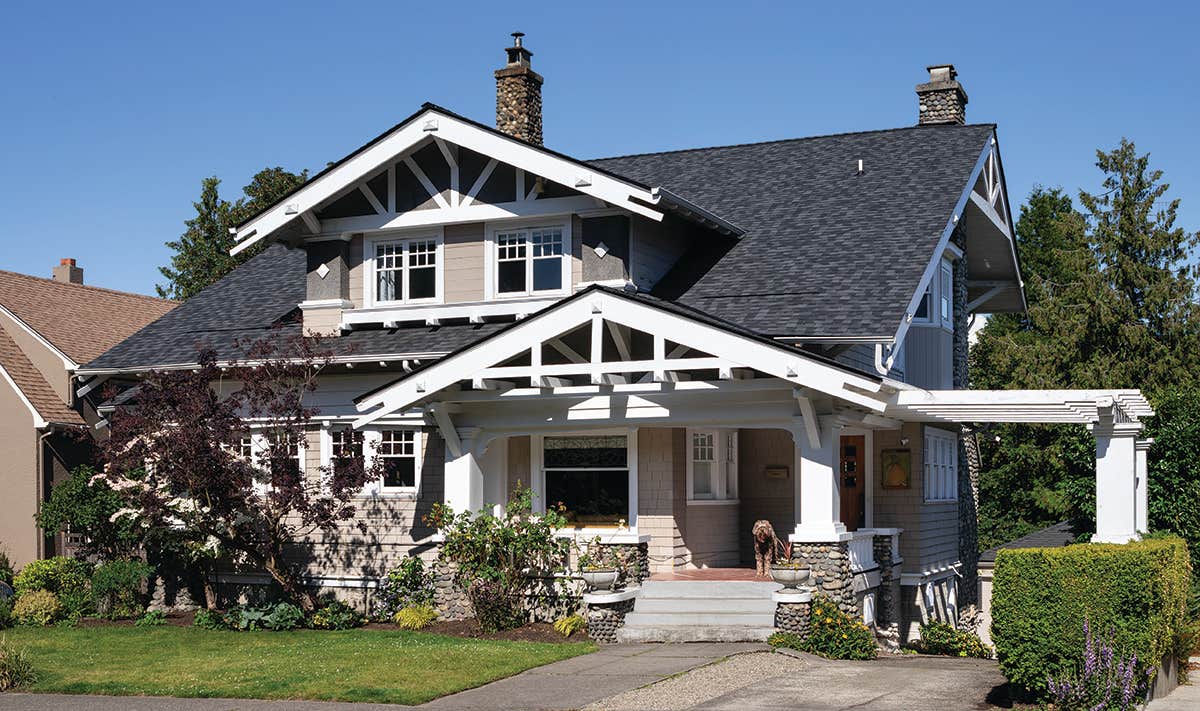Arts & Crafts Motifs and their Meaning
Certain motifs appear again and again in the decorative arts of the Arts & Crafts movement and its revival. Most of these designs come to us from nature.
ANIMALS
The rabbit (or hare) is associated with fertility and rebirth. Fishes are phallic and fecund yet, carrying the power of water, are associated with the Mother; the carp or koi fish is common in Anglo–Japanese designs. Stylized cats and tortoises are other popular motifs.
BATS
In Chinese, pronunciation of the words for “bat” and “happiness” are both “fu.” During the 1880s, bats appeared in decoration; as the Art Nouveau and Arts & Crafts movements grew, bat depictions were not uncommon.
BIRDS
A tile or an embroidered pillow will create a response depending on the creature shown: the mystical raven, a summer songbird, the carefree gull, or a cheery chickadee. And while the ancients associated owls with darkness and death, that changed during the Victorian period, when owls became symbolic of wisdom.
CELTIC KNOTS
The knotted cords, rediscovered during the 19th-century Celtic Revival, show up in Arts & Crafts textiles and jewelry. Modern designers find meaning in the “endless” nature of the sinuous designs. Celtic knots are mathematically pleasing; interlacing makes for good decoration.
FLOWERS
The sunflower and lily beloved of Victorian aesthetes remained popular. (Opium) poppies signify sleep, peace, or death; in the decorative arts, the red poppy flower is more celebratory. The yellow California poppy shows up in American items. The iris, so easy to stylize, has symbolized luck and friendship. The Celtic thistle rediscovered by British Arts & Crafts designer William Morris continues to represent persistence and wild beauty.
GINKGO LEAF
This sacred tree of the East may live over 1,000 years and is revered for strength and longevity. Ginkgo biloba (i.e., bi-lobed) trees have a notched leaf that is pleasing and easily stylized. Depictions were popular in Japanese art and in Craftsman and Prairie School design.
INSECTS
Spider web, butterfly, and honeybee recur through time, but every culture has loved the iridescent dragonfly, a free creature occupying water, land, and sky. Owing to perpendicular wings, it’s sometimes rendered as a cross.
ROSE
An enduring symbol of beauty and grace, the rose merits its own category among flowers. William Morris interpreted cultivated and wild roses in patterns for wallpaper and fabric. Highly stylized, the Glasgow rose of Scots designer C.R. Mackintosh is famous. Petals, buds and full flowers, leaves, canes, and even thorns are used in patterns geometric or sinuous.
TREES
The oak tree—mighty trunk —carries ancient symbolism of courage and fidelity. The pine is linked to immortality; the pinecone is connected to the spiritual Third Eye seated in the pineal gland—named for its pinecone shape. The windswept cypress is a popular image of the Arts & Crafts Revival.
Patricia Poore is Editor-in-chief of Old House Journal and Arts & Crafts Homes, as well as editorial director at Active Interest Media’s Home Group, overseeing New Old House, Traditional Building, and special-interest publications.
Poore joined Old House Journal when it was a Brooklyn-brownstoner newsletter in the late 1970s. She became owner and publisher and, except for the years 2002–2013, has been its editor. Poore founded the magazines Old-House Interiors (1995–2013) and Early Homes (2004–2017); their content is now available online and folded into Old-House Journal’s wider coverage. Poore also created GARBAGE magazine (1989–1994), the first unaffiliated environmental consumer magazine.
Poore has participated, hands-on, in several restorations, including her own homes: a 1911 brownstone in Park Slope, Brooklyn, and a 1904 Tudor–Shingle Style house in Gloucester, Massachusetts, where she brought up her boys and their wonderful dogs.

